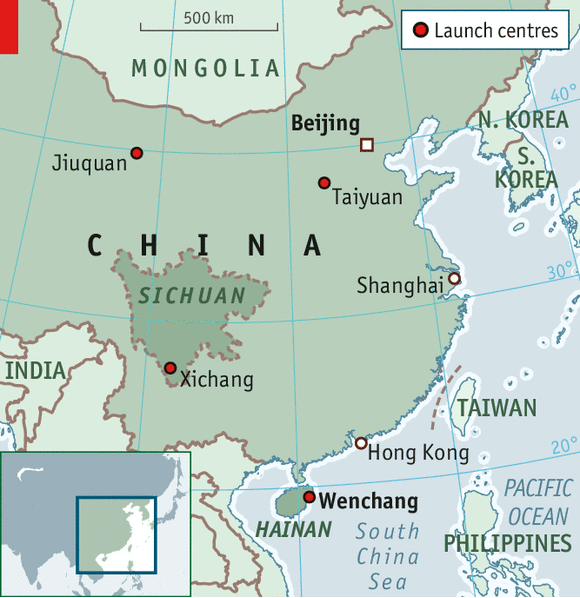Science & Technology
Long March 5B’ Rocket by China
- 06 May 2020
- 3 min read
Why in News
Recently, China has successfully launched the Long March 5B’ rocket and prototype spacecraft.
- It is being considered as China’s successful step to operate a permanent space station and send astronauts to the Moon.
- India is also planning to launch its own space station.
- A space station is a spacecraft capable of supporting crew members, designed to remain in space for an extended period of time and for other spacecraft to dock.
- One fully functional space station in the Earth's lower orbit is the International Space Station and astronauts conduct different experiments in it.
Key Points
- Long March 5B’ Rocket:
- It was launched from the Wenchang launch site in the southern island of Hainan.
- It weighs 849 tonnes.
- Unmanned Prototype Spaceship:
- It is expected to transport astronauts to a space station that China plans to complete by 2022 — and eventually to the Moon. It will have capacity for a crew of six.
- Future Missions by China:
- The assembly of the Tiangong space station is expected to begin in 2020 and finish in 2022.
- China plans to send an astronaut to the Moon in about a decade and then build a base there.
- The United States is so far the only country to have successfully sent humans to the Moon.
International Space Station (ISS)
- ISS is a habitable artificial satellite - the single largest man-made structure in low earth orbit. Its first component was launched into orbit in 1998.
- It circles the Earth in roughly 92 minutes and completes 15.5 orbits per day.
- The ISS programme is a joint project between five participating space agencies: NASA (United States), Roscosmos (Russia), JAXA (Japan), ESA (Europe), and CSA (Canada) but its ownership and use has been established by intergovernmental treaties and agreements.
- It serves as a microgravity and space environment research laboratory in which crew members conduct experiments in biology, human biology, physics, astronomy, meteorology, and other fields.
- Continuous presence at ISS has resulted in the longest continuous human presence in the low earth orbit.
- It is expected to operate until 2030.




